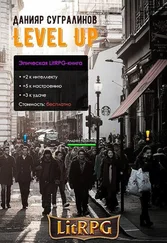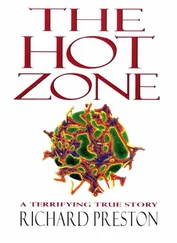Since both brothers seemed to have the same condition, Nan Esterly thought it was likely that they had a genetic disease. A genetic disease is an inherited condition that runs in families, passing from parents to their offspring in their DNA. The human DNA, or human genome, is stored in the chromosomes, small elongated bodies in the nucleus of cells. Human cells contain two sets of twenty-three chromosomes (for a total of forty-six chromosomes in each human cell). The human genome contains a bit more than three billion letters of genetic code—enough letters to fill roughly a thousand complete editions of Edward Gibbon’s The Decline and Fall of the Roman Empire. A gene is a stretch of DNA that holds the recipe for making a protein or group of proteins in the body.
In 1962, not a whole lot was known about genes and the human DNA. Even so, by that time Johns Hopkins pediatricians had begun discovering many previously unrecognized genetic diseases. Some of the doctors, perhaps not very kindly, would occasionally refer to children with genetic diseases as FLKs, or funny-looking kids. The story around Johns Hopkins was that every time a kid with an unusual appearance showed up in the emergency room, a new genetic disease would be found. Nan Esterly noticed that Matthew Morlen was wearing mittens, even though it was a warm day. She admitted the little boy to the hospital.
* * *
ESTERLY TOOK a sample of the boy’s urine, and both she and an intern looked at it under a microscope. They saw that it was filled with crystals. They were beautiful—the crystals were clear as glass, and they looked like bundles of needles or like fireworks going off. They were sharp, and it was obvious that they were tearing up the boy’s urinary tract, causing bleeding. Esterly and the intern pored over photographs of various kinds of crystals in a medical textbook, trying to identify them by their shape. The intern asked if the crystals might be uric acid, a waste product excreted by the kidneys; however, cystine, an amino acid that can form kidney stones, seemed the more likely candidate. Esterly needed a confirmation of the diagnosis, so she carried the test tube upstairs to the top floor of the Harriet Lane Home, where William L. Nyhan, a pediatrician and research scientist, had a laboratory. “Bill Nyhan was the guru of metabolism,” Esterly told me.
Nyhan, who was then in his thirties, had built some equipment that he was using to identify amino acids. He had been identifying amino acids in cancer cells while trying to find ways to cure cancer in children. “It was one of my impossible projects in cancer research,” he told me. Nyhan later became a professor of pediatrics at the U.C. San Diego School of Medicine. “I love working with kids, but dealing with pediatric cancer was depressing, saddening, and, in truth, maddening,” he said. Nyhan ran some tests on Matthew’s urine, using the equipment he had designed. The crystals weren’t cystine or any sort of amino acid. They proved to be uric acid.
A high concentration of uric acid in a person’s blood can lead to gout, a painful disease in which crystals of uric acid grow in the joints and extremities, particularly in the big toe. Gout has been known since the time of Hippocrates, when ancient doctors recognized that it occurs mainly in older men. Yet the patient here was a little boy. Nyhan had a medical student named Michael Lesch working in his lab, and together they went downstairs to have a look at the boy with “gout.”
Matthew lay in a bed in an open ward on the second floor of the Harriet Lane Home. The ward was filled with beds, and most of them were occupied by sick children. Matthew was a spot of energy in the ward, a bright-eyed child with a body that seemed out of control. The staff had tied his arms and legs to the bed frame with strips of gauze, to keep him from thrashing, and they had wrapped his hands in many layers of gauze. They looked like white clubs. Nurses hovered around the boy. “He knew I was a doctor and he knew where he was. He was alert,” Nyhan recalled. Matthew greeted Nyhan and Lesch in a friendly way, but his speech was almost unintelligible: he had dysarthria, an inability to control the muscles that make speech. They noticed scarring and fresh cuts around his mouth.
They inspected Matthew’s feet. No sign of gout. Then the boy’s arms and legs were freed, and Lesch and Nyhan saw a complex pattern of stiff and involuntary movements, a condition called dystonia. Nyhan had the gauze unwrapped from the boy’s hands.
Matthew looked frightened. He asked Nyhan to stop, and then he began crying. When the last layer was removed, they saw that the tips of several of the boy’s fingers were missing. Matthew started screaming, and thrust his hands toward his mouth. With a sense of shock, Nyhan realized that the boy had bitten off parts of his fingers. He also seemed to have bitten off parts of his lips.
“The kid really blew my mind,” Nyhan said. “The minute I saw him, I knew that this was a syndrome, and that somehow all of these things we were seeing were related.”
Lesch and Nyhan began to make regular visits to the ward. Sometimes Matthew would reach out and snatch Nyhan’s eyeglasses and throw them across the room. He had a powerful throw, apparently perfectly controlled, and it seemed malicious. “Sorry! I’m sorry!” Matthew would call, as Nyhan went to fetch his glasses.
The doctors persuaded Deborah Morlen to bring her older son to the hospital. Harold, it turned out, had bitten his fingers even more severely than Matthew and had chewed off his lower lip down into his chin, at the limit of the reach of his upper teeth. Both boys were terrified of their hands and screamed for help even as they bit them. The Morlen brothers, the doctors found, had several times more uric acid in their blood than normal children do.
Nyhan and Lesch visited the Morlen home, a row house in a working-class neighborhood in East Baltimore, where Matthew had been living with his mother and grandmother. “He was a well-accepted member of his little household, and they were very casual about his condition,” Nyhan said. The women had devised a contraption to keep him from biting his hands, a padded broomstick that they placed across his shoulders, and they tied his arms to it like a scarecrow. The family called it “the stringlyjack.” Matthew often asked to wear it.
Nyhan and Lesch also discovered that they liked the Morlen brothers. Lesch, who became the chairman of the department of medicine at St. Luke’s–Roosevelt Hospital, in New York City, said, “Michael and Harold were really engaging kids. I really enjoyed being around them. I got beat up once by Matthew.” He had leaned over the boy and asked him how he was feeling, and Matthew had slugged him in the nose. Lesch had staggered backward holding his nose while Matthew said, “Sorry! I’m sorry!”
* * *
TWO YEARS AFTER meeting Matthew Morlen, Nyhan and Lesch published the first paper describing the disease, which came to be called the Lesch-Nyhan syndrome. Almost immediately, doctors began sending patients they suspected of having the disease to Nyhan. Very few doctors had ever seen a person with Lesch-Nyhan syndrome, and boys with the disease were, and are, frequently misdiagnosed as having cerebral palsy. (Girls virtually never get it.) Nyhan himself found a number of Lesch-Nyhan boys while visiting state institutions for developmentally disabled people. When I asked him how long it took him to diagnose a case, he said, “Seconds.” He went on, “You walk into a big room, and you’re looking at a sea of blank faces. All of a sudden you notice this kid staring at you. He’s highly aware of you. He relates readily to strangers. He’s usually off in a corner, where he’s the pet of the nurses. And you see the injuries around his lips.”
Читать дальше








![Shin_Stark - В подземелье я пойду, там свой level подниму X [СИ]](/books/384602/shin-stark-v-podzemele-ya-pojdu-tam-svoj-level-po-thumb.webp)



